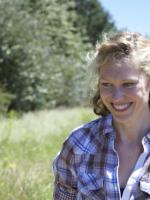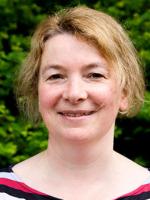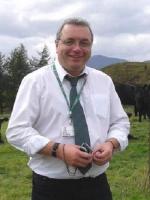
Work Package Biodiversity and ecosystems
Introduction
Using a range of innovative tools and techniques, our research explores the impact of management interventions on ecosystem services. We focus on the ecosystem services provided by woodland and semi-natural (upland) habitats. Our work on woodlands explores human-nature interactions across different case-studies and sites across Scotland. In upland semi-natural habitats, we are investigating the impact of different management approaches on carbon sequestration, biodiversity, agricultural productivity and zoonotic disease risk.
Aim of Research
Ecosystem services provision: To develop an in-depth understanding by 2021 of the impacts of selected management interventions (including restoration) on Ecosystem Service (ES) flows and of the associated trajectories of change. This will be linked to decision making and reporting towards international commitments at the national level, and help develop our impact and collaborations in the international scientific community.
Progress
The study on the impacts of management interventions on woodland ecosystem services is complete, both the in-depth innovative research and the cross-site analysis. We compared past and present management scenarios, with future ones based on i) current site management plans, ii) biodiversity conservation, iii) people engagement, and iv) austerity. Our research has highlighted the diversity of perceived impacts and trade-offs in ecosystem service delivery arising from different woodland management interventions and therefore the importance of deliberation in developing more equitable and just management decisions. A summary of our findings have been published as a SEFARI case-study and will be soon available as a research article. The findings on our upland ecosystem service research, including best practice guidelines for managing zoonotic diseases, has been shared with farming communities via talks, podcasts and virtual farm tours. The results from ongoing monitoring of translocated rainforest epiphytes (ash-oak woodland restoration) continue to be fed back to the IUCN global specialist group on lichens and key Scottish biodiversity stakeholders.
Highlights:
- Participatory video enables meaningful and transformative interactions with nature: SEFARI research scientists have published a paper demonstrating the benefits of using participatory video as a nature engagement tool with young people. In addition to facilitating transformative experiences with nature it increased young people’s efficacy, confidence, and sense of empowerment, all of which are necessary to bring about pro-environmental behaviour.
- Deliberative scenario workshops with local experts are a useful tool to explore the impacts of management on ecosystem services. As SEFARI research scientists found out they allow site managers to explore different management interventions in a holistic, systematic, and deliberative way, while taking into consideration a diversity of views and values from a range of stakeholders.
- Social citizen science has the potential to bring benefits to environmental and sustainability research by bringing fresh perspectives and new knowledge not typically accessible to research scientists. However, for greater resilience, citizen science projects should be designed to accommodate potential changes in life circumstances and capacities of citizen scientists. Find out more in our paper published in Citizen Science: theory and practice.
We established a new partnership with The Woodland Trust and Arkaig Community Forest in Loch Arkaig and developed a set of six scenarios for two of their woodland sites. This will enable us to conduct expert panel workshops for a third case-study exploring the perceived impact of management interventions on woodland ecosystem services. These workshops were postponed till 2021-2022 due to Covid. We led on and organised a workshop on environmental justice and greenspace for a virtual conference with Middlesex University and the Environmental Rights Centre for Scotland. In December we designed and facilitated a weeklong on-line training course in digital story-telling for staff in the Cumbernauld Living Landscape project. We also published three research papers on the social dimensions of woodland ecosystem services, including one using social citizen science and one on participatory video. A full in-depth analysis of all the participatory video data from our research was also completed. A proof of concept for ephiphytic lichen translocation has been established and will be shortly applied at the landscape scale. A series of virtual tours demonstrating the types of research at Kirkton & Auchtertyre farms were developed.
Highlights:
- Forest microclimates: SEFARI scientists have identified the conditions under which forest expansion and management today can create microclimates that support the diversity of globally-rare Scottish rainforest into the future (under climate change). This will assist spatial planning among the wide range of stakeholders tasked with meeting Scotland’s reforestation targets, to benefit nature over the long-term. (Ellis & Eaton, 2021).
- Training on using digital stories to assess impact: SEFARI scientists delivered a week-long training programme on digital storytelling to staff and apprentices of Creating Natural Connections, a Cumbernauld Living Landscape project. The training programme is enabling staff to facilitate the creation of personal digital stories of change and impact, enabling more participatory, creative methods of evaluating project outcomes.
- Connecting young people with greenspaces: A paper published in People and Nature describes how participatory video can provide new insights on young people's experience of greenspace, enable meaningful and transformative human–nature interactions and help build efficacy.
We have continued to cumulatively increase our understanding of the role of management interventions on ecosystem services through the application of the multi-site framework and additional in-depth qualitative research at different sites. In year 4 we focused on our 2nd case study - urban woodland sites in Cumbernauld. Two expert panel workshops were conducted. The data were analysed and the results disseminated through workshop reports to stakeholders. We spent the latter half of year 4 exploring options, and securing partners, for our 3rd case-study at Loch Arkaig.
We carried out annual monitoring of translocated epiphytes into restored temperate rainforest which showed some translocations starting to establish and grow independently of their attachment at the start of the trials. This holds promise for up-scaling for the purpose of wider restoration of temperate rainforests. We progressed discussions for guidance of cryptosporidium risk and are developing Integrated Land Management Plans for 3 Crown Estates farms which incorporates elements of Ecosystem Service Assessments.
Highlights:
- Princes Trust achieve awards: SEFARI scientists have helped Cumbernauld school pupils to produce participatory videos of their experiences of local greenspace (available on Vimeo, access details available from antonia.eastwood@hutton.ac.uk). This has helped to transform pupil’s understanding, interactions and behaviours towards greenspace and secured their Prince’s Trust Achieve Award for teamwork and effective engagement with local communities. The videos will be used for monitoring and evaluating impacts of the Creating Natural Connections programme.
- Local perceptions of land management in high-value conservation sites: research by SEFARI social scientists has examined how residents and visitors use and place value on woodlands with a high conservation value. The research aimed to gain insight about perceptions of both biodiversity and woodland management initiatives that focus on improving biodiversity. The research found that, in addition to biodiversity and conservation, people were keen to increase the ‘use’ of the woodlands, often drawing on narratives of past land use and cultural histories to describe potential social and economic benefits.
- Poster on participatory video and engaging people with nature won the prize for best poster at the Scottish Biodiversity Conference in November 2019.
In year 3 we completed the application of our multidisciplinary framework to a new woodland site in Glen Creran, Glasdrum Nature Reserve. We also analysed and reported back to our stakeholders, in the form of a workshop report, our findings from the first site, Glen Creran Woods. The pilot studies on citizen social science and participatory video have been completed. This has resulted in one manuscript on citizen social science submitted to a journal. The participatory video training and research programme has resulted in four films being produced and screened to the communities in Cumbernauld. The videos will form a baseline for the monitoring and evaluation part of the Creating Natural Connections project, of which we are now partners and scientific advisors. A number of focus groups and interviews have also been conducted to explore the use of participatory video as a monitoring and evaluation tool.
The above framework and methodology were also applied to two upland glens subjected to different management (akin to different stages in a ‘rewilding’ process). Land use change scenarios were developed to look at the potential impacts on ecosystem delivery and discussed with stakeholders in a workshop. Ecosystem mapping processes, which were developed in year 2, were discussed with Crown Estates Scotland and SAC Consulting to determine its relevance to the work they engage with. Draft guidelines for the management of cryptosporidiosis were drawn up through collaboration between Moredun and SRUC.
Highlights:
- Heritage Fund: Funding application success with Scottish Wildlife Trust and other partners for Creating Natural Connections project.
- International collaboration: Together with researchers at INRA, France and University of Edinburgh amongst others, a joint analysis of the social dimensions of forest regeneration in European uplands was conducted.
- Community film screenings: ‘The Wild Ways Well Health Walk’ by Neighbourhood Networks, 19 February 2019, Cumbernauld; ‘Straight out of Cumby’, ‘Is Cumbernauld Really Safe?’ and ‘Opposite Day’ by pupils from St Maurice’s High, 19 March 2019, Cumbernauld. These films draw on local people’s experience of green space, and were produced by and screened to the local community, greenspace practitioners and advisors.
In year 2 we tested our multidisciplinary framework by running a pilot of our local panel assessment with land managers from Cumbernauld. The framework and associated methodology allows the assessment of the perceived impact of different interventions on woodland ecosystem services (using six different scenarios) by a local expert panel. The expert panels will be conducted in three case-study areas across Scotland, with two sites in each area. We also piloted innovative approaches (citizen science and participatory video) as tools to measure impacts of interventions in green spaces. With stakeholders, we explored options for mapping broader ecosystem services and identified priorities in relation to zoonotic diseases. This work will be developed in year 3. Successful translocations have been initiated to reintroduce rainforest epiphytes (lichens and bryophytes) back into their ash-oak forest habitats following the removal of rhododendron.
Highlights:
- Workshop on Biodiversity: SRUC's Hill & Mountain Research Centre hosted a workshop on “Biodiversity management on hill farms", organised jointly with Loch Lomond & Trossachs National Park and the Farm Advisory Service, at the farms on July 25 2017. The morning consisted of presentations and discussions and the afternoon featured a visit to the agri-environment sites on the lower parts of the farms.
- Input to Westminster Brexit discussions: A SEFARI researcher presented at a Westminster Parliamentary Office of Science and Technology/NERC Roundtable Discussion on 17th July 2017 with specialist advisers from Parliamentary Select Committees focused on Brexit and the environment. The presentation highlighted environmental issues – and research needs – which may differ at devolved country level.
In year 1, we developed a multidisciplinary framework to assess changes in ecosystem services supply in (1) woodlands and (2) upland habitats. For the woodland work, this also entailed establishing study areas along a spectrum from the peri-urban to the remote, and required reaching agreements with organisations managing these areas. Concrete plans for a multi-site study as well as in-depth, specific research in selected areas have been developed. The approaches being taken for woodland and upland habitats have been discussed with local and national-level stakeholders as well as academics, and will now form the basis of the empirical work in years 2-5.
Highlights:
- Public engagement weekend: Held at RBGE to look at stakeholder perceptions of woodland; c.150 people involved, including policy, scientists, land managers and general public.
- Input into the Forest Livelihoods: The Assessment, Research and Engagement conference (FLARE – a global network) in December included two presentations and a workshop on “Participatory methods for understanding and monitoring changes in forest ecosystem services”.
Future Activities
Our research on human-nature interactions and enabling a plurality of values, voices and diverse knowledge for more just and sustainable decision making will carry on in the new research programme (D4-1 People and Nature). We will also explore alternative nature-economy relations and how more pluralistic paradigms could lead to more just, biodiverse and sustainable futures. We will also build on our research on greenspaces in Cumbernauld and how to best harness green and blue infrastructure for people and nature.
SEFARI scientists will also continue their research on how to achieve multiple benefits in the uplands, especially in relation to natural carbon stores in SRUC-D4-1 (Seeking multiple benefits from natural carbon stores in the uplands).
We will disseminate our protocols for biodiversity net gain into restored temperate rainforest via stakeholder organisations such as the Atlantic Woodland Alliance and will assess and contrast Cryptosporidium risk at the farm scale across upland areas to provide information to key stakeholders about how to reduce risks.
Selected Outputs
2017/18
- Irvine, KN., Herrett, S. (2018) Does ecosystem quality matter for cultural ecosystem services? Journal for Nature Conservation, 46, 1-5.
- Craig, T.; Fischer, A.; Lorenzo-Arribas, A. (2018) Shopping versus being in nature? An exploratory study of everyday experiences. Frontiers in Psychology, 9, Article 9.
- Davy McCracken highlighted the need for an integrated land use policy and the role woodland and forestry has to play in that at a CONFOR Policy conference focussed on From Trees to Timber Homes, Edinburgh, 27th September.
2018/19
- Pages, M.; Fischer, A.; Van der Wal, R. The dynamics of volunteer motivations for engaging in the management of invasive plants: insights from a mixed-methods study on Scottish seabird islands. Journal of Environmental Planning and Management, 61, 904-923.
- Buijs, A.; Fischer, A.; Muhar, A. From urban gardening to planetary stewardship: human-nature relationships and their implications for environmental management. Journal of Environmental Planning and Management, 61, 747-755.
- Pages, M.; Fischer, A.; Van der Wal, R.; Lambin, X. Empowered communities or cheap labour? Engaging volunteers in the rationalised management of invasive alien species in Great Britain. Journal of Environmental Management, 229, 102-111.
- Shackleton, R.T; Richardson, D.M.; Shackleton, C.M.; Bennett, B.; Crowley, S.L.; Dehnen-Schmutz, K.; Estevez, R.A.; Fischer, A.; Kueffer, C.; Kull, C.A.; Marchante, E.; Novoa, A.; Potgieter, L.J.; Vaas, J.; Vaz, A.S.; Larson, B.M.H. Explaining people's perceptions of invasive alien species - A conceptual framework. Journal of Environmental Management, 229, 10-26.
- Eastwood, A., Juarez-Bourke, A., Lorenzo-Arribas, A., Fischer, A., Herrett, S., Donaldson-Selby, G., Hague,A., Pakeman, R.J., Hester, A., and Artz, R. (2018) Glen Creran Woods: Exploring the perceived impacts of different management interventions on woodland benefits. Workshop Report. The James Hutton Institute, UK.
- Participatory films on experiences of greenspace by Neighbourhood Networks and pupils of St Maurice’s High, Cumbernauld. Please contact Antonia Eastwood for a private viewing link to the films.
2019/20
- Hague, A., Fischer, A., Juarez-Bourke, A., Byg, A., Herrett, S. (2020) Research Summary: Local perceptions of land management in high value conservation sites. The James Hutton Institute, Aberdeen, UK.
- Hague A., Eastwood, A., Lorenzo-Arribas, A., Juarez-Bourke, A., Herrett, S., Byg, A., Fischer, A. (2019). Glasdrum Wood: exploring the perceived impacts of different management interventions on woodland benefits. Workshop Report. The James Hutton Institute.
- Byg, A., Lorenzo-Arribas, A., Eastwood, A., Herrett, S., Juarez-Bourke, A., Donaldson-Selby, G. and Fischer, A. (2019) Cumbernauld Forest Wood: Exploring the perceived impacts of different management interventions on woodland benefits. Workshop Report. The James Hutton Institute, UK.
- Eastwood, A., Lorenzo-Arribas, A., Byg, A., Herrett, S., Juarez Bourke, A and A. Fischer (2019) Cumbernauld Glen: Exploring the perceived impacts of different management interventions on woodland benefits. Workshop Report. The James Hutton Institute, UK.
- Alba Juárez-Bourke, Antonia Eastwood, Scott Herrett and Alice Hague (2019) Participatory Video: Helping people engage with nature. The James Hutton Institute, Aberdeen. Poster presented at Scottish Biodiversity Science Conference, Edinburgh 2019.
2020/21
- Eastwood, A., Juárez-Bourke, A. Herrett, S. & Hague, A. (2021) Connecting young people with greenspaces: the case for participatory video. People and Nature (published online).
- Fischer, A., Dinnie, E., Ellis, R., Eastwood, A., Carter, A. and Welsh, G. (2021) Exploring the Potential of Citizen Social Science for Environmental and Sustainability Research: Experiences of and with Community-Based Researchers. Citizen Science: Theory and Practice, 6(1): 17, pp. 1–12.
- Barnaud, C.; Fischer, A.; Staddon, S.; Blackstock, K.L.; Corbera, E.; Hester, A.J.; Mathevet, R.; McKee, A.; Moreau, C.; Reyes, J.; Sirami, C.; Eastwood, A. (2021) Is forest regeneration good for biodiversity? Exploring the social dimensions of an apparently ecological debate. Environmental Science and Policy, 120, 63-72.
- Juntti, M. Eastwood, A. & Fifield S. (2020) Environmental Justice for All? How to engage with and manage greenspaces for plural identities, perspectives and capabilities. Workshop at POLLEN 2020 conference, 22 September 2020, 9-12am.
- Presentations to Hill, Upland & crofting farmer-led Group available here and here.
- Virtual tours on ecosystem services, biodiversity, Cryptosporidium and agri-environmental management from SRUC’s Kirkton and Auctertyre Farms are here.
2021/22
- Hague, A.; Fischer, A.; Byg, A.; Juárez-Bourke, A.; Herrett, S.; Eastwood, A. (2022). Conservation in conversation: People's perspectives of a woodland with high conservation value - a qualitative study. People and Nature.
- Staddon, S., Byg, A., Chapman, M., Fish, R., Hague A., Horgan, K. (2021) The Value of Listening and Listening for Values in Conservation. People and Nature.
- Eastwood, A. and Juarez-Bourke, A. (2021) The power of participatory video: and unexpected outcome! A blog for Insightshare.
- Hague, A., Eastwood, A., MacLean, L., Marshall, K., Lorenzo-Arribas, A., Herrett, S (2022) Loch Arkaig Pine Forest: Exploring the perceived benefits of different management interventions on woodland benefits.
- MacLean, L., Hague A., Eastwood, A,. Marshall, K., Lorenzo-Arribas, A., Herrett, S (2022). Clunes and the Tom an Eireannaich woodland: exploring the perceived impacts of different management interventions on woodland benefits.
- Pakeman, R. & Eastwood, A. (2022) Comparing Biodiversity Predictions by People and Computer Models for woodland management. SEFARI case study.
- Eastwood, A. Lorenzo-Arribas, A., MacLean, L. Hague, A. Juarez-Bourke, A., Marshall, K. Pakeman, R. Donald-Selby, G. and Hester, A. 2022 Assessing the impact of different management interventions on perceived woodland benefits. SEFARI Case Study.
- Webinar - Is shabby the new chic? An exploration of nature recovery on sheep farms. NSA Breakfast Club.
- McCracken, D & Holland, J. (2021) The multiple benefits from agroforestry. Presentation.
- McCracken, D & Holland, J. (2021) Farming in the uplands: addressing biodiversity and carbon.







